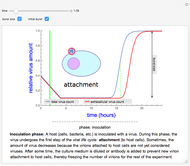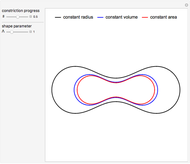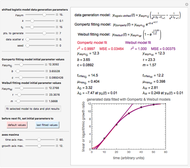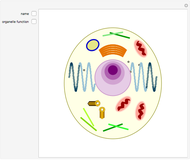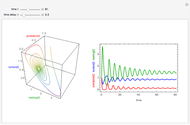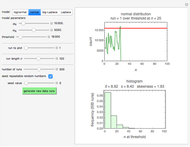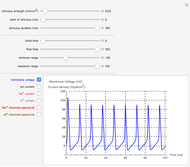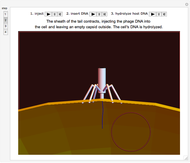Life Cycle of a Lytic Phage (T4 Bacteriophage)

Requires a Wolfram Notebook System
Interact on desktop, mobile and cloud with the free Wolfram Player or other Wolfram Language products.
A bacteriophage is a type of virus that infects bacteria. There are two life cycles of a virus once it invades a host cell: the lytic cycle and the lysogenic cycle. The lytic cycle is the main process of viral replication. During the lytic cycle, the foreign viral DNA that is injected into the host cell by the virus is used to make multiple copies of itself. Many viruses go through the lysogenic cycle before the lytic cycle. During the lysogenic cycle, foreign DNA is integrated into the bacterial chromosome and is replicated multiple times as the host cell divides. This Demonstration details the life cycle of the T4 bacteriophage, which specifically invades the bacteria E. coli. The T4 bacteriophage is not capable of undergoing the lysogenic life cycle and therefore directly undergoes the lytic cycle.
[more]
Contributed by: Kyung Eun Christina Baek (February 2016)
Open content licensed under CC BY-NC-SA
Snapshots
Details
Reference
[1] N. A. Campbell and J. Reece, Biology, 7th ed., Boston: Benjamin Cummings / Pearson, 2004.
Permanent Citation
"Life Cycle of a Lytic Phage (T4 Bacteriophage)"
http://demonstrations.wolfram.com/LifeCycleOfALyticPhageT4Bacteriophage/
Wolfram Demonstrations Project
Published: February 18 2016






